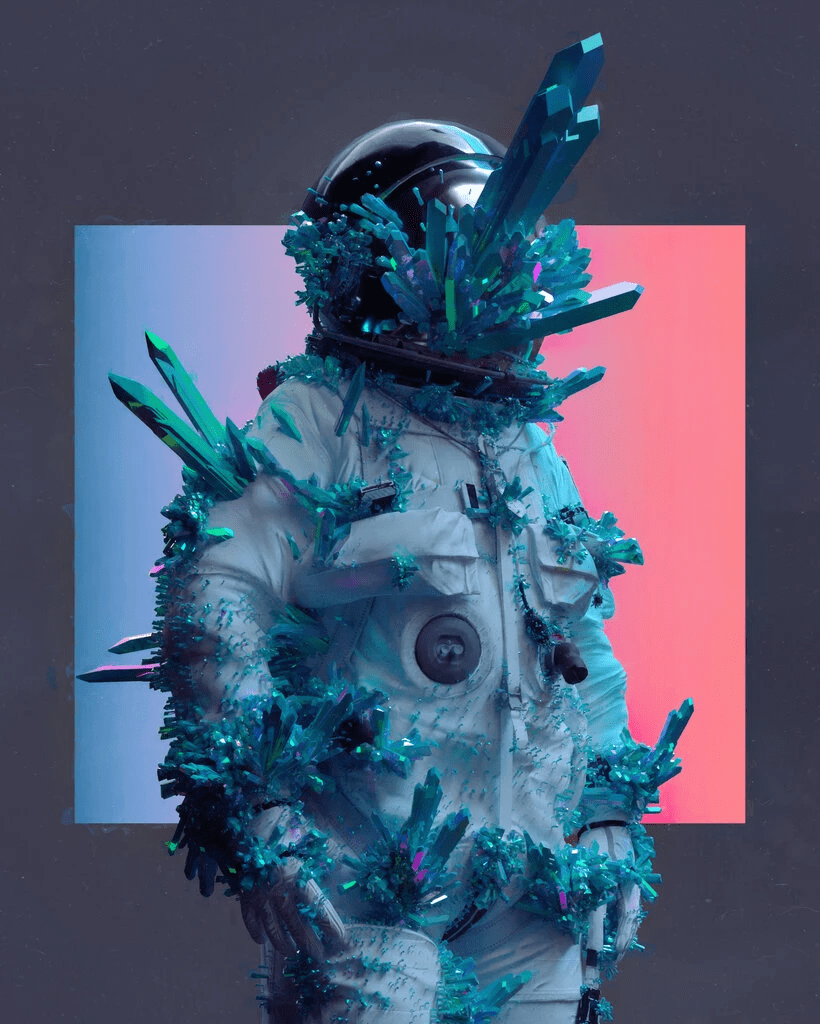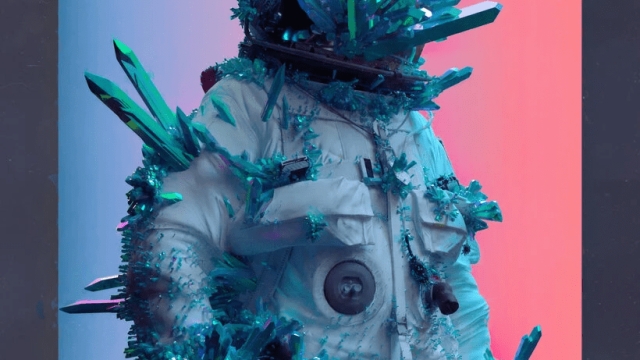
In recent years, the digital landscape has transformed drastically, paving the way for groundbreaking innovations that challenge our traditional concepts of ownership. Among these innovations, Non-Fungible Tokens, or NFTs, have emerged as a revolutionary technology that is redefining how we buy, sell, and interact with digital assets. From art and music to virtual real estate and collectibles, NFTs are not just a passing trend; they represent a profound shift in how we view ownership in the digital age.
NFTInsider stands at the forefront of this evolution, providing daily insights and updates on all things NFT, metaverse, and Web3. Written by industry experts, our content demystifies this complex world, helping enthusiasts and newcomers alike understand the potential and implications of digital ownership. As we delve deeper into the revolution of NFTs, we will explore their impact on creativity, commerce, and community, and how they are shaping the future of our increasingly digital lives.
Understanding NFTs
Non-fungible tokens, or NFTs, represent a groundbreaking shift in how we think about ownership in the digital realm. Unlike cryptocurrencies, which are interchangeable and hold equal value, NFTs are unique digital assets that contain specific information stored on a blockchain. This uniqueness allows them to represent items such as digital art, music, videos, and virtual real estate in ways that traditional digital files cannot.
The technology behind NFTs is primarily based on blockchain, a decentralized ledger that ensures the authenticity and provenance of each token. This means that when someone purchases an NFT, they own a verified and traceable digital certificate of ownership. This has significant implications for artists and creators, as NFTs not only allow them to sell their work directly to consumers but also provide mechanisms for royalties on future sales, enabling a sustainable revenue model.
As the popularity of NFTs grows, so does their integration into various industries and platforms, particularly within the metaverse and Web3 environments. This evolution is creating exciting opportunities for creators and collectors alike, fostering a new economy where digital ownership is respected and valued. With NFTInsider leading the way in delivering industry news, enthusiasts can stay informed on the latest developments and trends shaping the future of digital ownership.
The Rise of Digital Ownership
The concept of digital ownership has gained unprecedented traction in recent years, largely driven by advancements in blockchain technology and the emergence of non-fungible tokens or NFTs. Unlike traditional digital assets that can be easily copied and shared, NFTs enable a proof of ownership that is secure, transparent, and verifiable. This transformation empowers creators and consumers alike, allowing for unique digital items to be bought, sold, and traded with assurance of authenticity. As the internet continues to evolve, the demand for a reliable method of establishing ownership over digital content becomes increasingly vital.
The explosion of the NFT market has opened new avenues for artists, musicians, and content creators to monetize their work in ways that were previously unimaginable. No longer do they rely solely on intermediaries like galleries or record labels to sell their creations; instead, NFTs allow creators to connect directly with their audience. This decentralized approach fosters a new era of creativity, where artists maintain control over their intellectual property and can reap the benefits of their work through royalties and sales on various platforms. The ability to showcase and trade digital art instantly has also contributed to a rapidly evolving ecosystem that celebrates digital ownership.
Moreover, digital ownership extends beyond art and entertainment into various sectors such as gaming, fashion, and even virtual real estate in the metaverse. Players can own unique in-game items, clothes, or properties that they can trade or sell, blurring the lines between virtual and real-world economies. As consumers embrace this shift, the potential for innovative business models and extended user engagement becomes apparent. With industry experts emphasizing trends and developments, platforms like NFTInsider are invaluable resources for staying informed about this dynamic landscape, making it evident that digital ownership is not just a trend, but a foundational shift in how we perceive value and ownership in the digital age.
NFTs in the Metaverse
The metaverse represents a new digital frontier where virtual worlds converge, creating expansive environments for social interaction, gaming, and commerce. Within this landscape, non-fungible tokens (NFTs) play a crucial role by providing digital ownership of assets. Users can buy, sell, and trade unique items such as virtual real estate, in-game items, and exclusive artwork, all securely linked to their identities through blockchain technology. This integration elevates user experiences, allowing for true ownership and authenticity in a realm often marred by counterfeit digital assets.
In the metaverse, NFTs empower creators and developers by enabling them to monetize their work directly. Artists can sell limited edition digital art or collectibles, developers can produce unique in-game assets, and brands can create immersive experiences tied to NFT ownership. This shift not only fuels creativity but also fosters a thriving economy within virtual spaces, encouraging users to invest in their digital identities and the communities they inhabit. As a result, the allure of owning unique digital items continues to drive participation in the metaverse.
Furthermore, the interoperability of NFTs across various platforms enhances their value and usability. Users can migrate their assets from one virtual world to another, further solidifying the concept of ownership. This flexibility not only benefits individual users but also lays the groundwork for a cohesive metaverse ecosystem, where collaboration and shared experiences become the norm. As NFTs continue to evolve, their presence in the metaverse will undoubtedly expand, shaping the future of digital ownership and interaction.
Web3 and Its Implications
Web3 represents a fundamental shift in how we interact with the internet, emphasizing decentralization and user sovereignty. Unlike its predecessors, which relied heavily on centralized servers and data silos, Web3 leverages blockchain technology to create a more transparent and fair digital ecosystem. This decentralization ensures that users have greater control over their own data and digital assets, paving the way for innovations such as NFTs, which allow for true ownership of digital content.
Crypto Games
The implications of this shift are profound. As Web3 continues to evolve, it fosters an environment where creators and consumers can interact directly, without intermediaries taking a significant cut of the profits. This empowers artists, musicians, and other creators to monetize their art in innovative ways, ensuring that they receive fair compensation for their work. The rise of NFTs exemplifies this trend, offering a mechanism for artists to authenticate and sell their creations directly to their audience.
Moreover, Web3 encourages a sense of community and collaboration among users. By enabling peer-to-peer transactions and interactions, it fosters an ecosystem where users can participate in governance and decision-making processes. This democratization of the internet not only enhances user engagement but also promotes transparency, trust, and a shared sense of purpose within digital spaces. As we continue to explore the possibilities of Web3, the potential for reshaping our online experiences is limitless.
Future Trends in NFTs
As we look to the future, the utility of NFTs is expected to expand beyond digital art and collectibles. Industries such as gaming, music, and real estate are starting to adopt NFT technology to create unique experiences and ownership models. For instance, in gaming, players can truly own in-game assets that they can trade or sell, enhancing their overall experience. This shift will likely lead to a surge in consumer interest and investment in NFTs, propelling them into mainstream consciousness.
Another trend to watch is the integration of NFTs with emerging technologies like augmented reality and virtual reality. As the metaverse continues to develop, NFTs will play a critical role in creating a rich, interactive environment where users can fully immerse themselves. Digital ownership will not only apply to collectible items but also to digital real estate and experiences, allowing users to monetize their interactions in virtual spaces in entirely new ways.
Regulatory clarity will also shape the future of NFTs. As governments and regulatory bodies begin to understand and define the legal frameworks surrounding digital assets, this will foster greater confidence among investors and creators alike. The establishment of these regulations could solidify NFTs as a legitimate form of investment, attracting institutional players and creating a more structured marketplace. As these trends continue to unfold, the NFT landscape will evolve, offering more opportunities for innovation and engagement.
